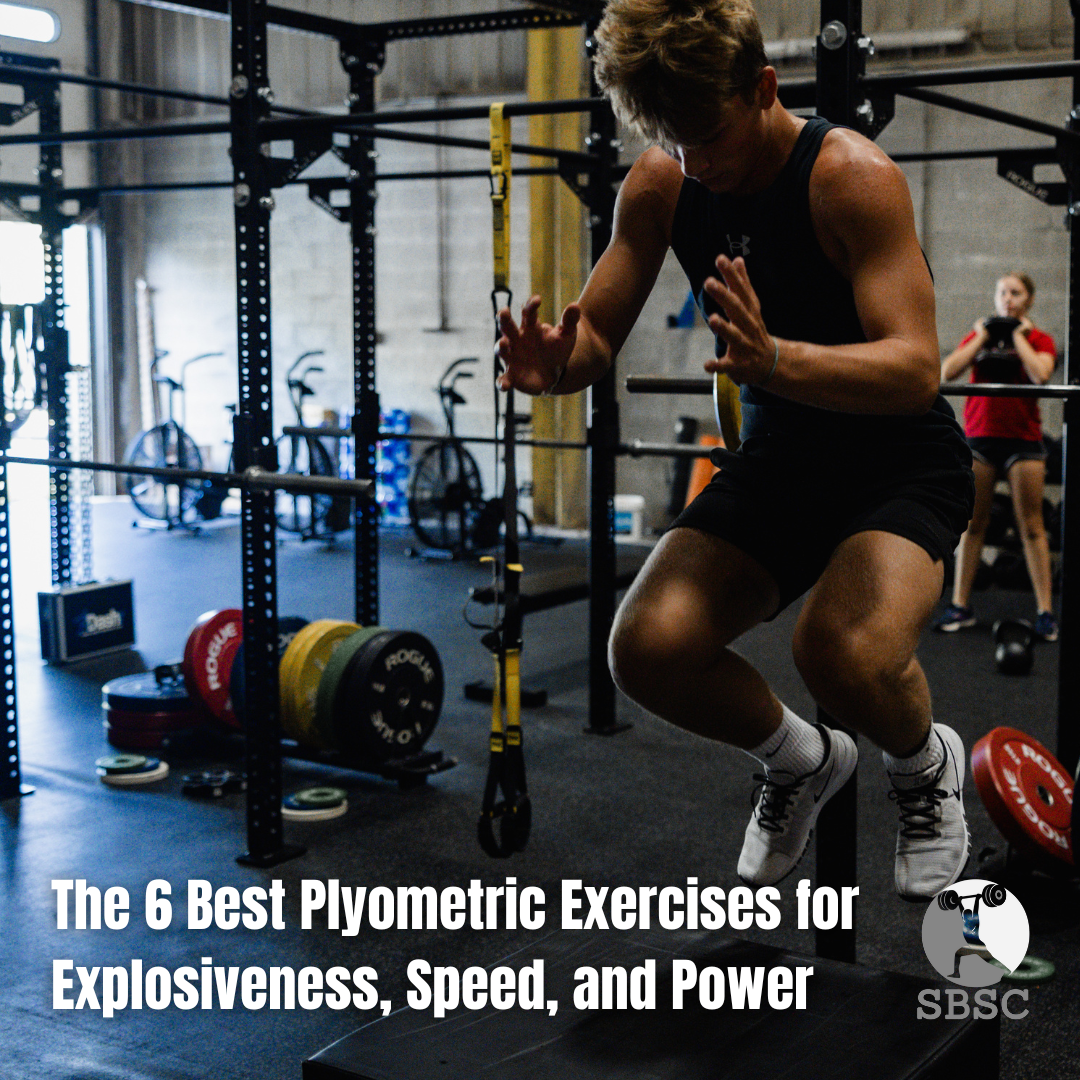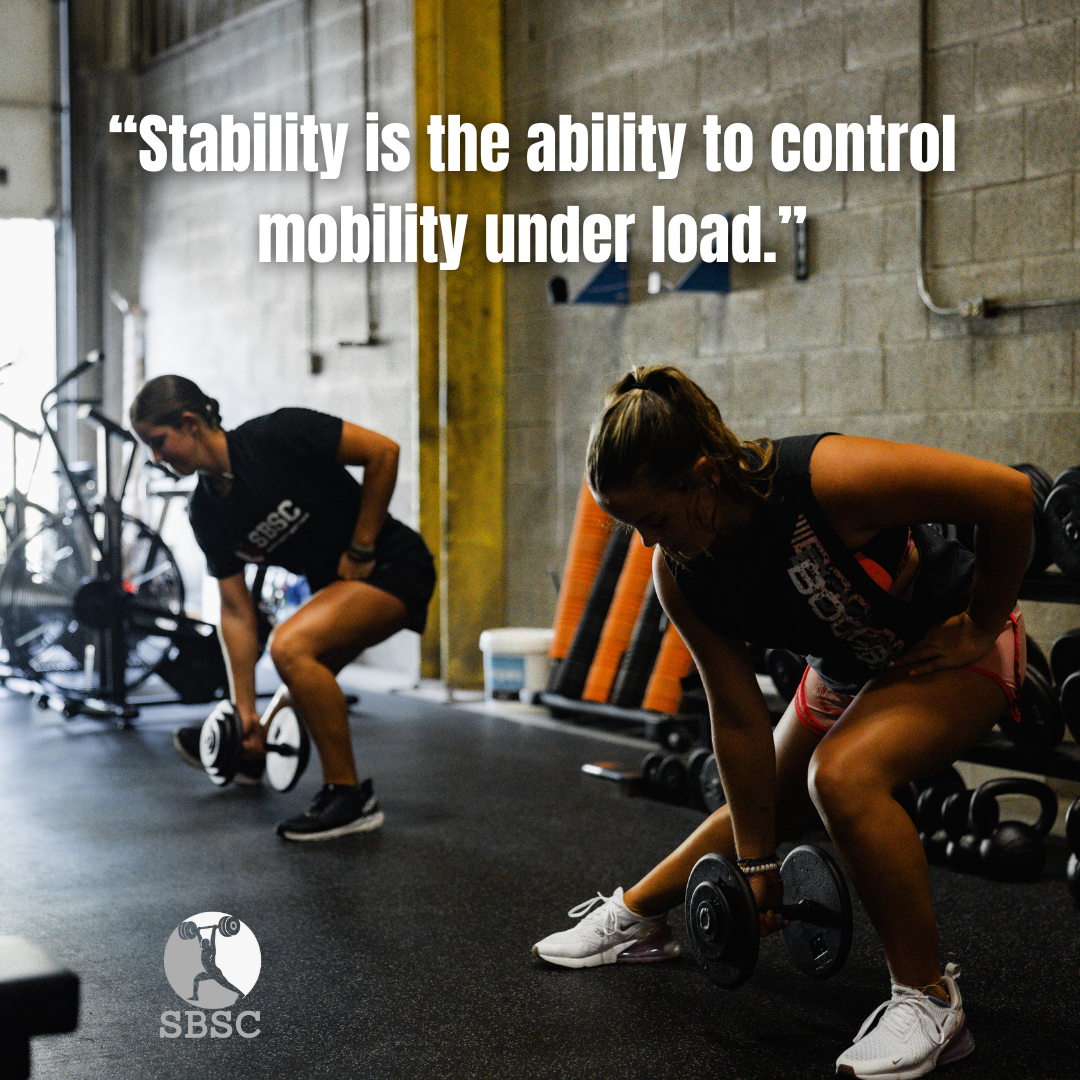Move Explosively for Athletic Success
When it comes to athletic success, there’s one undeniable factor that separates the good from the great - explosiveness. Whether you’re sprinting down the field, jumping for a rebound, or powering through a clean and jerk, the ability to move explosively is a game-changer.
As someone who has spent over two decades working with athletes of all levels, I’ve seen firsthand how explosive movements elevate performance. But it’s not about raw strength or speed. True success comes from training your body to generate maximum force in the shortest time possible. When you can do that, you don’t just compete - you dominate.
In this article, I’ll walk you through why explosive training is essential for your success, how it works, and which exercises will help you tap into that next level of performance. No matter where you’re starting, I aim to equip you with the tools to move faster, jump higher, and perform better.
Why Explosive Movements Matter
Explosive training is designed to improve your body’s ability to generate force quickly - known as rate of force development (RFD). Research has shown that RFD is critical for movements requiring speed and power. Studies have found that elite athletes in sports like track and field, soccer, basketball, and football exhibit higher RFD than less-experienced athletes, contributing to superior sprinting, jumping, and cutting abilities.
Rapid force development does more than improve performance. Training explosively also plays a vital role in injury prevention. Research shows that explosive training enhances the stretch-shortening cycle (SCC) of muscles and tendons, allowing your body to absorb and release force more efficiently. This helps prevent injuries such as strains and ligament tears, especially during high-speed, high-impact movements.
By training to move explosively, you’re developing a type of athleticism that translates directly to competition. Athletes who commit to explosive training move faster, react quicker, and can unleash power when it matters most.
Key Explosive Movements
To develop the kind of speed, strength, and agility that translates to sports performance, athletes need to focus on movements that train the body to generate force quickly and efficiently. Here are some of the most effective exercises for building explosive power...
Plyometric Exercises
Plyometrics are essential because they rely on the stretch-shortening cycle to improve both muscle elasticity and reaction time.
- Box Jumps: Train vertical explosive power, improving your ability to jump higher and react quickly. Studies show that plyometric exercises like box jumps increase vertical leap and sprinting speed.
- Broad Jumps: Build horizontal explosive power, critical for sports like track and field or football.
- Lateral Bounds: Excellent for building lateral explosive power, single-leg stability, and overall balance.
Olympic Lifting Variations
Olympic lifts are powerful for developing full-body explosiveness. These movements require coordination, power, and speed—three crucial elements for athletes.
- Power Clean: Builds explosive hip extension, essential for sprinting, jumping, and tackling. Studies show that Olympic lifting variations improve maximal power output, especially in lower body movements, making them invaluable for athletes across many sports.
- Power Snatch: Like the power clean, the power snatch trains rapid force production and coordination, with an added emphasis on overhead stability and mobility—great for athletes who need both strength and control, like swimmers and wrestlers.
Medicine Ball Exercises
Medicine ball exercises train explosive movements in various planes of motion, mimicking the multi-directional demands of most sports.
- Rotational Throws: Beneficial for sports like baseball, tennis, and hockey. These exercises improve the transfer of power from the lower to the upper body.
- Overhead Slams: Overhead slams help build upper-body explosive power while engaging the core. They also mimic the movement patterns seen in sports like volleyball and basketball, where athletes need to generate power from above.
Speed Drills
Speed is the direct result of explosive power, and speed drills are essential to translating gym gains into on-field performance.
- Sprints (Resisted and Unresisted): Resisted sprints, such as running with a sled or resistance bands, increase power output and improve sprint acceleration. Research confirms that sprint training, especially when combined with resistance, significantly enhances running speed and lower-body power.
- Change of Direction Drills: Cone drills, ladder drills, and other agility exercises help athletes apply explosive power in multi-directional movements, which is crucial for sports like basketball, soccer, and football.
Progression and Variation
To continue improving explosiveness, athletes must vary the intensity and complexity of these movements. Start with the basics - such as unweighted jumps or low-resistance sprints - and progressively increase the load or height as your power improves. Keep your training specific to your sport, focusing on movements that mimic the explosive demands of your game.
The Science Behind Explosiveness
Explosive movements don’t just look impressive - they’re rooted in science. When an athlete moves explosively, their muscles, tendons, and nervous system work together to generate maximum force in a short amount of time. What happens inside the body to generate maximum force can be enhanced through training. Let’s take a closer look...
Fast-Twitch Muscle Fibers
Your body is made up of different types of muscle fibers, but when it comes to explosive movements, fast-twitch muscle fibers (Type II) take center stage. These fibers are responsible for producing high levels of force in a short time, allowing you to sprint, jump, or throw with power. The more you train explosively, the more you can activate and strengthen these fibers, making them better equipped to respond when you need them most.
Research shows that athletes with a higher proportion of fast-twitch fibers typically excel in power-based activities like sprinting and jumping. By engaging in explosive training, such as plyometrics or Olympic lifting, you can increase the efficiency and recruitment of these fibers, which directly improves your speed and power on the field.
The Role of the Nervous System
Your nervous system plays a crucial role in explosive movements. It’s responsible for coordinating the rapid firing of muscles, ensuring they contract with the speed and force needed to perform at your best. Explosive training enhances this neuromuscular coordination, allowing for faster and more precise muscle activation. Over time, this improves your RFD.
Research has shown that increasing RFD is essential for athletic performance, particularly in sports where quick bursts of speed and power are required. Studies suggest that athletes who focus on RFD in their training can significantly improve sprinting, jumping, and change-of-direction performance.
The Stretch-Shortening Cycle
As mentioned, the stretch-shortening cycle (SSC) is another key mechanism behind explosive movements. When you perform exercises like box jumps or squat jumps, your muscles undergo a rapid stretch, followed by an immediate contraction. This cycle stores elastic energy during the stretch phase and releases it during the contraction, resulting in more powerful movements. It’s essentially the body’s way of using stored energy to produce force more efficiently.
By training the SSC through exercises like plyometrics, athletes can improve their ability to absorb and release force, which not only boosts performance but also helps protect against injuries. Studies have found that SSC training enhances power output, sprint speed, and jumping ability, making it a critical component of any explosive training program.
Power vs. Strength: Understanding the Difference
It’s important to note that power and strength are not the same thing. While strength refers to the maximum force a muscle can generate, power is the ability to generate that force quickly. This is why an athlete may be strong but not necessarily explosive. To improve explosiveness, you need to focus on exercises that challenge your muscles to contract rapidly rather than just lifting heavy weights slowly.
Integrating Explosive Movements into Training
To build explosiveness, you need a structured approach. Here’s how to do it effectively:
Start Early in the Session
To get the most out of explosive movements, prioritize them early in your workout. When your body is fresh, your nervous system is primed to handle the high-intensity demands of explosive training. Exercises like Olympic lifts, plyometrics, and wall acceleration drills should be performed after your warm-up but before fatigue sets in. This allows you to maintain proper technique and generate maximum power with every movement.
Keep Reps Low and Quality High
Explosive training is all about quality over quantity. While endurance training may involve higher reps, when you’re focused on power, it’s essential to keep the reps low and intensity high. Aim for 3-5 sets of 3-6 reps per exercise, ensuring that each rep is performed with full effort and precise form. Training explosively is taxing on the nervous system, so it’s important to prioritize rest and recovery between sets to maintain intensity.
Progression Is Key
Like all forms of training, progression is essential. Start with foundational movements and lighter loads, and as your power increases, gradually increase the difficulty. For example, begin with simple plyometrics like squat jumps and progress to more advanced exercises like depth jumps or single-leg variations. If you’re using Olympic lifts, begin with the hang clean before moving to a full clean. Your goal should be steady, consistent improvement without sacrificing form.
Training Specific to Your Sport
While explosive training benefits all athletes, your training should also reflect the specific demands of your sport. If you’re a sprinter, prioritize drills like wall accelerations and power cleans. If you play basketball, focus on vertical plyometrics like box jumps and squat jumps. Training with movements that mimic your sport will translate directly to game-day performance and give you the edge when it counts.
Final Thoughts...
Training explosively is intense and demanding, and it requires your full focus every time you step into the gym. But trust me, it’s worth it. Every athlete I’ve coached who committed to explosive training has experienced new levels of performance. They’ve become faster, more powerful, and better prepared for the demands of their sport.
You don’t need to be perfect. You just need to start. Maybe that means doing your first set of wall acceleration drills or getting comfortable with a few box jumps. Over time, you’ll see the results. Your body will adapt, and that extra burst of speed or higher jump will become second nature.
If you commit to training explosively, I believe you’ll see growth in more ways than one. You’ll not only improve physically but develop a mindset of resilience and determination.
That’s what competition is all about. And that’s how you’ll succeed.
Dedicated to your success,
Sam



